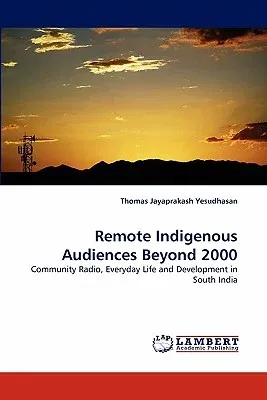Thomas Jayaprakash Yesudhasan
(Author)Remote Indigenous Audiences Beyond 2000Paperback, 11 May 2011

Qty
1
Turbo
Ships in 2 - 3 days
In Stock
Free Delivery
Cash on Delivery
15 Days
Free Returns
Secure Checkout
Print Length
248 pages
Language
English
Publisher
LAP Lambert Academic Publishing
Date Published
11 May 2011
ISBN-10
3844391738
ISBN-13
9783844391732
Description
Product Details
Book Format:
Paperback
Country of Origin:
US
Date Published:
11 May 2011
Dimensions:
22.86 x
15.24 x
1.42 cm
ISBN-10:
3844391738
ISBN-13:
9783844391732
Language:
English
Location:
Saarbrucken
Pages:
248
Publisher:
Weight:
367.41 gm

